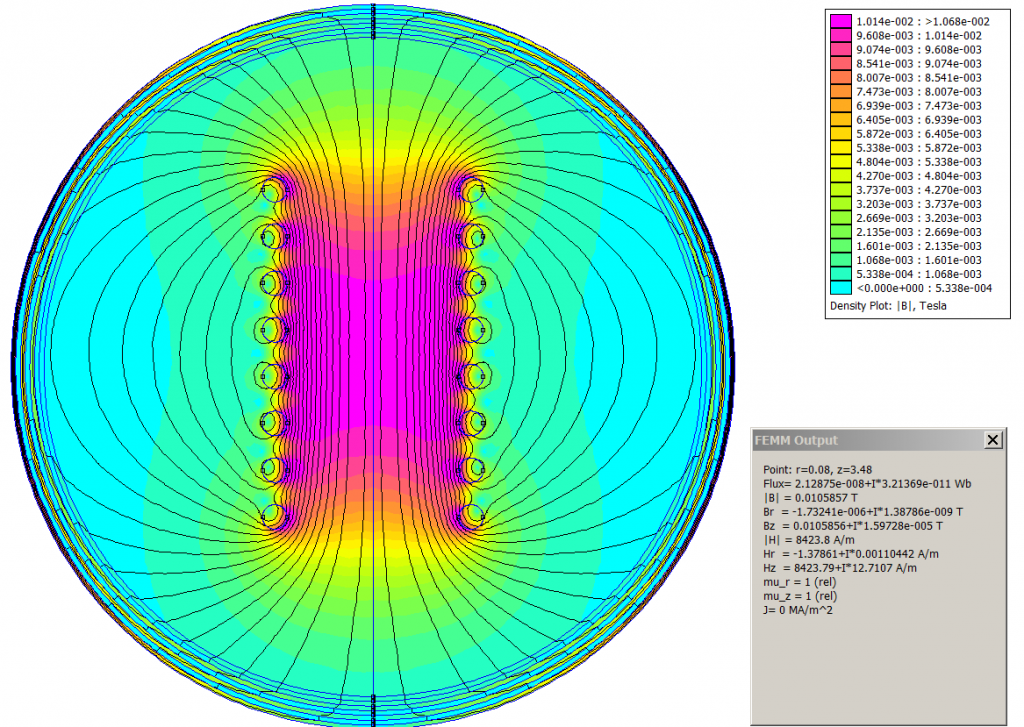From the fundamental point of view, the application of magnetic nanoparticles in hyperthermia strongly depends on their relaxation behavior. Magnetic and structural properties of nanomaterials, as well as the strength of interparticle interactions, are in the origin of complex (even nonequilibrium) relaxation dynamics which is observed in these systems. Its understanding plays a key role in the optimization of system thermal losses, and so this topic is devoted to the analysis of active relaxation processes in nanoparticle systems using SQUID magnetometry, Mössbauer spectroscopy, and dynamic hysteresis measurements. The research covers the following activities:
- “In-house” construction of AC magnetometer for measurements of dynamic hysteresis loops in the high-frequency range of AC field. This activity comprehends optimization of pick-up coils geometry, set up and calibration of magnetometer, development of acquisition system, i.e. transfer and analysis of collected data as well as a comparative analysis of obtained results with the data determined by the calorimetric method.

(M. Boskovic, PhD thesis Magnetic nanoparticles in medicine: measurement of specific losses and biodistribution, in progress).
- Investigation of relaxation dynamics of nanoparticle magnetic moments through the measurements of magnetic relaxations, AC susceptibility, dynamic hysteresis, magnetic aging, and memory effects in a wide range of temperature and magnitude and frequencies of the applied magnetic field. This activity implies the definition of suitable measurement procedures (ZFC, TRM, DCD, IRM), a full description of nanoparticle relaxation through system parameters determination (blocking/freezing temperatures, activation volume, characteristic relaxation times, distribution of relaxation time, etc.), and unveiling of complex correlations between system’s structural and magnetic properties.

(M. Perovic et al., J. Phys. D: Appl. Phys., (2013) 46, No 165001).
- Investigation of interparticle interactions’ impact on the magnetization relaxation is based on the variation of their strength and monitoring of the subsequent change of relaxation regime, i.e. change of heat dissipation mechanisms. It is of major importance to establish correlations between the strength of dipolar interactions and systems relaxation behavior and to give a proper interpretation of the observed equilibrium and nonequilibrium relaxation phenomena within existing theoretical models.
- Investigation of heating efficiency in magnetic hyperthermia for synthesized nanoparticle samples. To obtain optimized nanoparticle agents for application in magnetic hyperthermia, the most efficient samples for in vitro and in vivo experiments will be selected based on the analysis of active relaxation processes and measured heat losses.
- The development of magnetic memory materials is based on the investigation of nanomaterials with nonequilibrium relaxation dynamics. Within this activity, the possibility of thermal writing in such media has been done by application of specific SQUID measurement procedures. In the first phase of the study, the most suitable samples were selected based on their structural and magnetic properties, while in the second phase the processes of thermal writing and erasing of data close to the room temperature and without application of magnetic or electric fields has being tested.

(M. Perovic et al. J. Alloys Comp. 855 (2021) 157523).